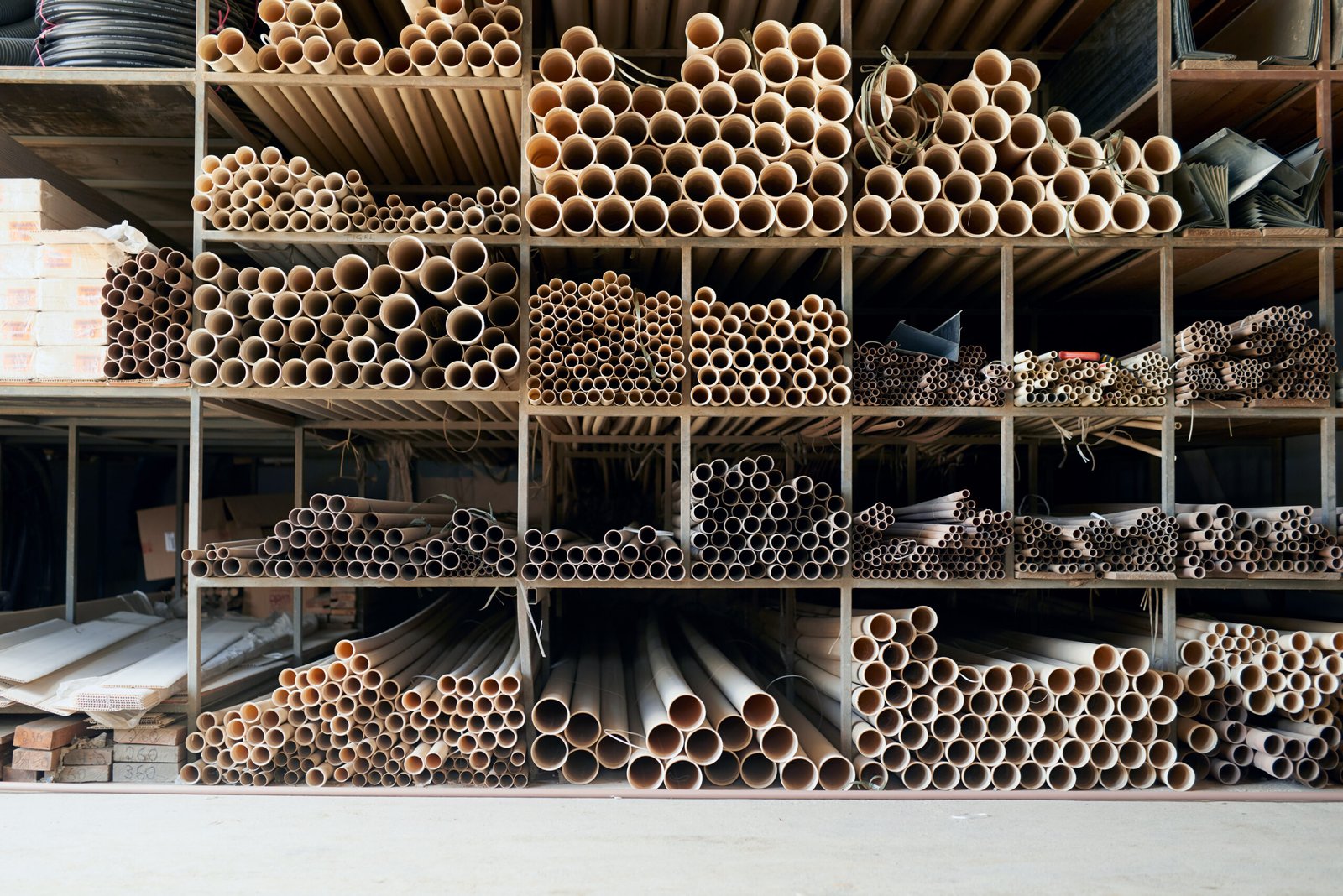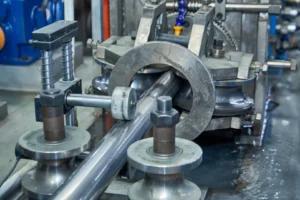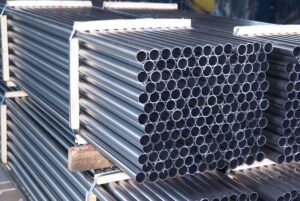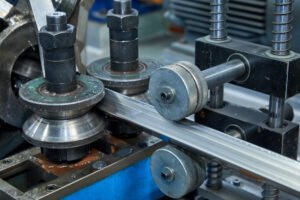Supplying Qatar’s Stadiums: Tube Manufacturing Machinery Success Story in Mega Construction
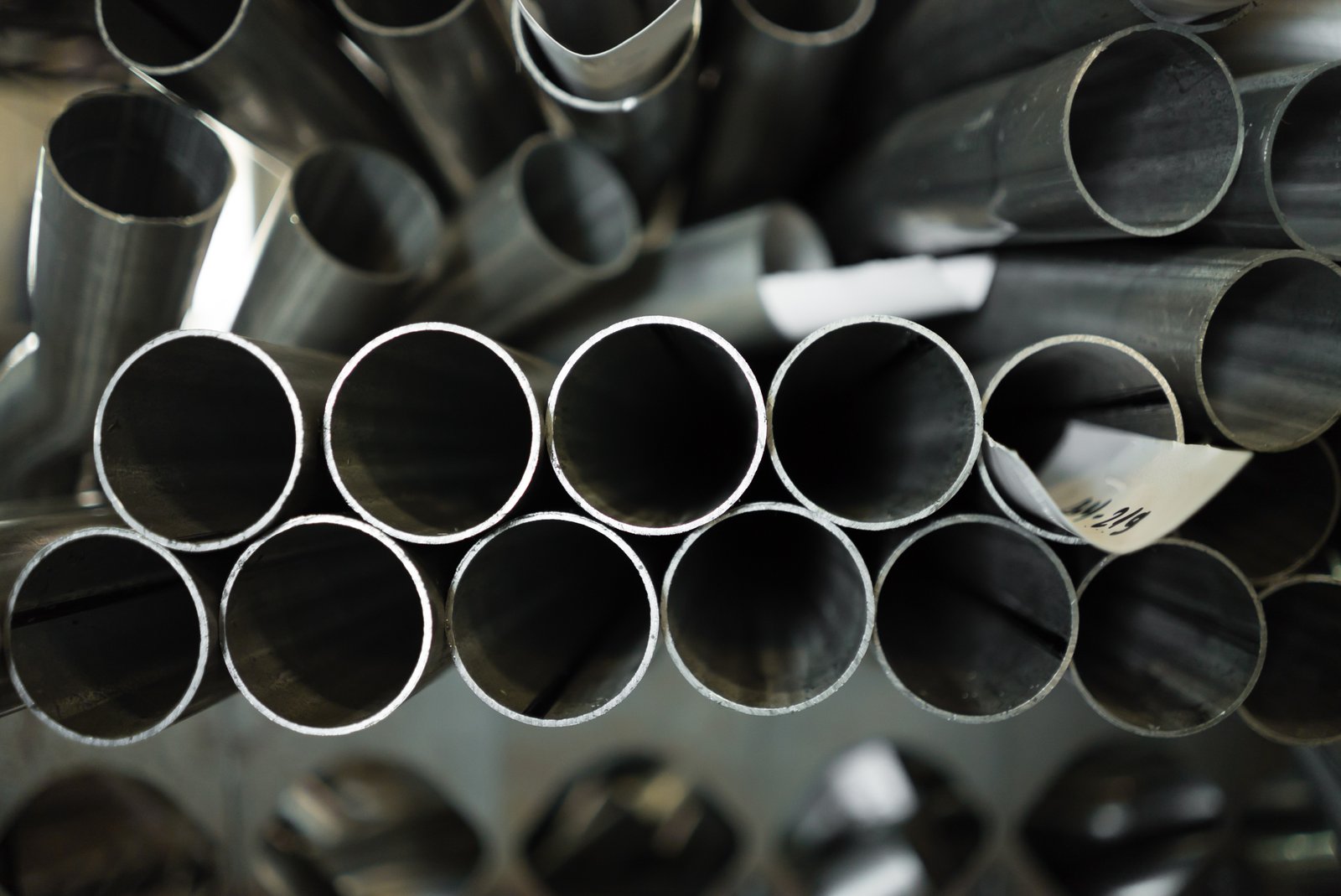
Facing a mega-construction project like Qatar's stadiums1 brings immense pressure on timelines and structural integrity. The sheer scale demands unprecedented precision and efficiency in producing structural tubes, where any delay or defect could be catastrophic. Advanced tube manufacturing machinery2 emerges as the unsung hero, ensuring every component meets exacting standards.
Tube manufacturing machinery was pivotal in supplying the vast quantities of high-strength, precisely engineered steel tubes for the structural frameworks, roofing, and facades of Qatar's World Cup stadiums. Its role was fundamental to achieving the architectural complexity and ensuring the structural integrity required for these iconic venues.
The journey to build these architectural marvels was anything but simple. It involved overcoming immense logistical and technical hurdles. Let's explore how our industry's technology met these challenges head-on, turning ambitious blueprints into breathtaking reality and demonstrating the true power of precision engineering in modern mega-construction projects.
The success of Qatar's stadium construction wasn't just about having machines; it was about having the right machines. The demand wasn't merely for tubes, but for tubes with specific load-bearing capacities, corrosion resistance for the coastal climate3, and perfect uniformity for seamless assembly. Data from the World Steel Association highlights a surge in demand for high-strength structural steel in the years leading up to the event. A client of ours, a major steel tube producer in the Middle East, secured a contract for the Al Janoub Stadium. They initially struggled with meeting the ±0.05 mm tolerance specified by the architects. This is where the dialogue shifts from simple production to strategic technological adoption, a critical pivot for any manufacturer involved in such high-stakes projects.
What role did tube manufacturing machinery play in constructing Qatar’s stadiums?
Ever wonder how the sweeping curves and massive roofs of Qatar's stadiums were actually built? The architectural visions demanded a colossal amount of structural tubing, and traditional methods couldn't guarantee the required uniformity or speed. This is where specialized tube manufacturing machinery became indispensable, producing the foundational steel skeleton.
Tube manufacturing machinery played a foundational role by producing the millions of meters of high-strength structural steel tubes required for the primary frameworks, intricate roof structures, and façade systems. This machinery ensured consistent quality, precise dimensions, and the sheer volume needed to realize the complex architectural designs.
The architectural ambition of Qatar's stadiums, from Zaha Hadid's design for Al Janoub Stadium to the intricate façade of the Lusail Stadium, relied heavily on a robust and precisely engineered steel skeleton. These weren't just buildings; they were statements of intent, blending cultural motifs with cutting-edge engineering. The sheer scale is difficult to comprehend. We're talking about thousands of tons of steel, formed into tubes of varying diameters and wall thicknesses, each needing to fit perfectly with the next. The role of the machinery, therefore, transcended simple production. It became the enabler of architectural art. Without the ability to reliably produce these core components at scale, the projects would have been mired in delays and budget overruns. I recall a conversation with an EPC contractor involved in the Al Thumama Stadium project. He emphasized that their critical path analysis hinged entirely on the timely delivery of quality-certified tubes. Any deviation in wall thickness or diameter could compromise the weld integrity and, by extension, the safety of the entire structure. This underscores the silent, yet critical, contribution of the machinery humming away in factories, often thousands of miles from the construction site itself. It was a global supply chain effort with precision manufacturing at its heart.
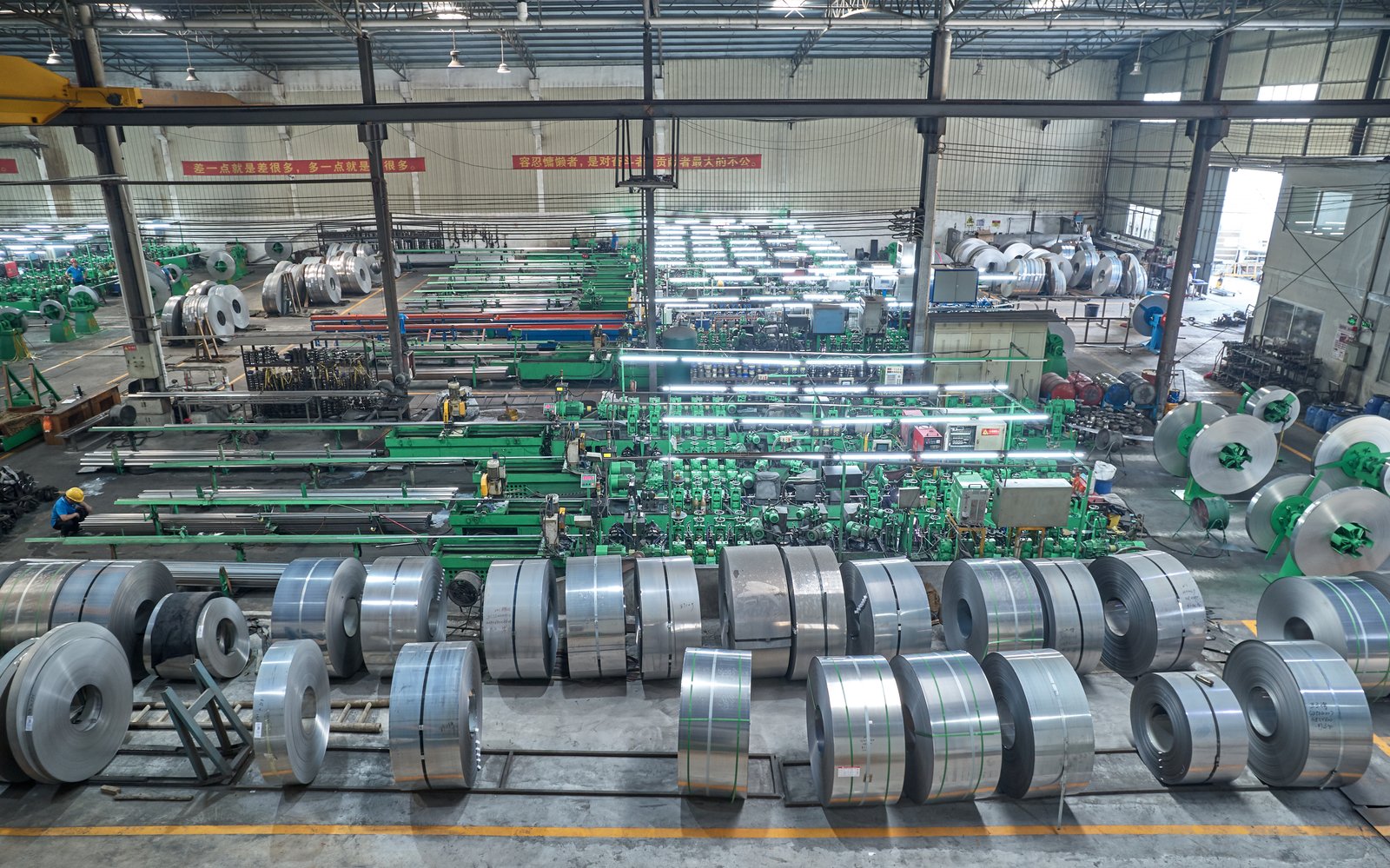
The Backbone of a Nation's Vision: Structural Integrity
The primary role of tube manufacturing machinery was to produce the very backbone of each stadium. The main columns, roof supports, and compression rings that bear the immense structural loads were all formed from high-strength steel tubes. These components required absolute consistency in wall thickness and diameter to ensure predictable load-bearing capacity and safe, secure welding on-site. Any failure in these primary elements would be catastrophic, so the quality originating from the tube mill was the first and most critical link in the safety chain.
According to reports from the period, the construction sector saw a massive influx of investment4, with a significant portion allocated to materials like structural steel. The demand was for steel that could withstand not only the weight of the structures but also the region's harsh environmental conditions. The specified S355 and S460 structural steel grades demanded production lines capable of handling high-strength alloys without compromising their mechanical properties during the forming and welding process.
I remember a client, a leading steel tube producer in the MENA region, who utilized our XZS heavy-duty tube mills for the Lusail Stadium project. Their primary challenge was producing large-diameter (up to 508mm) tubes for the main support columns while maintaining perfect concentricity and uniform wall thickness across thousands of meters. Our machines, engineered with robust, CNC-machined frames, provided the immense stability required for such demanding production. This ensured every tube met the stringent structural specifications, forming a reliable foundation for the iconic venue.
Architectural Expression through Engineered Profiles
Beyond the primary structure, the machinery enabled the stunning architectural expression seen in the stadiums' facades and rooflines. The flowing curves of the Al Janoub stadium or the intricate, diamond-like patterns of the Education City Stadium were not achievable with standard, off-the-shelf tubes. These designs required a vast array of custom profiles, curves, and sizes, all of which needed to be produced with artistic precision and industrial efficiency.
This is where the flexibility of modern tube mills became essential. Features like our quick-change tooling and adaptable sizing systems allow manufacturers to switch between producing different tube profiles and diameters with minimal downtime. For a project requiring a multitude of different components, this agility is crucial. It allows fabricators to produce the exact sequence of parts needed by the on-site assembly teams, facilitating a smooth and rapid construction process.
A Turkish fabrication partner of ours secured a subcontract for the façade elements of the Ahmad bin Ali Stadium. They used one of our industrial precision tube mills to process stainless steel tubes, chosen for both aesthetic appeal and superior corrosion resistance. The machine's precision tolerance of ≤ ±0.05 mm was not a luxury; it was a necessity. This accuracy ensured every panel and decorative tube aligned perfectly, creating the seamless and visually complex exterior that the architects had envisioned, bringing their digital model to life in steel.
Enabling Essential Infrastructure and Services
The role of tube manufacturing extends deep into the functional guts of a stadium, far beyond what is visible. Thousands of meters of tubes are essential for critical systems like HVAC (heating, ventilation, and air conditioning)5, plumbing, electrical conduits, and fire suppression systems. While less glamorous, these networks are the lifeblood of the facility, and their failure can be just as disruptive as a structural issue.
These applications require a diverse range of tube types and materials, from large-diameter carbon steel pipes for HVAC water circulation to smaller stainless steel tubes for potable water and sanitary systems. A reliable and efficient supply of these tubes is paramount to keep the complex MEP (Mechanical, Electrical, and Plumbing) installation6 on schedule, a process that is intricately woven into the main construction timeline.
| Tube Type | Primary Material | Key Application in Stadiums | Machine Used |
|---|---|---|---|
| Structural Hollow Sections | Carbon Steel (S355/S460) | Main Frames, Roof Trusses, Columns | Large Diameter / Heavy-Duty Tube Mill |
| Façade & Decorative Tubes | Stainless Steel (304/316) | Exterior Cladding, Architectural Features | Industrial Precision Tube Mill |
| HVAC & Firefighting Pipes | Carbon Steel / Galvanized | Chilled Water Lines, Sprinkler Systems | HF Carbon Steel Pipe Welding Line |
| Plumbing & Sanitary Tubes | Stainless Steel | Potable Water, Waste Systems | Stainless Steel Precision Tube Mill |
| Handrails & Balustrades | Stainless Steel | Safety Barriers, Staircases | Tube Polishing Machine (finishing) |
We saw this firsthand with an MEP contractor from India who was outfitting two of the training venues. They needed a massive volume of both carbon steel and stainless steel pipes within a very compressed timeframe. They opted for a turnkey solution from XZS, incorporating both a high-frequency carbon steel pipe welding line and an industrial precision tube mill. The high degree of automation, managed through a central PLC touch-screen control system, allowed them to run the lines with minimal staffing while maximizing output. This ensured they could feed the installation teams on-site just-in-time, preventing any delays in the crucial MEP fit-out phase.
How were specific challenges overcome during Qatar’s stadium construction using tube manufacturing machinery?
Imagine facing extreme heat, tight deadlines, and unprecedented architectural demands all at once. These challenges in Qatar could have led to material failure and construction delays. Advanced tube manufacturing machinery provided the solution by enabling the on-demand production of highly specialized and durable steel components.
Specific challenges like the harsh desert climate, complex geometric designs, and stringent safety standards were overcome by using tube manufacturing machinery capable of producing high-grade, corrosion-resistant steel tubes with extreme precision, ensuring structural integrity and perfect fit-up for intricate architectural elements.
The construction of Qatar's stadiums was a masterclass in problem-solving. The challenges were multifaceted, ranging from environmental to logistical to purely technical. The region's climate, with its high salinity and temperatures, demanded materials with superior corrosion resistance. Architecturally, the designs pushed the boundaries of what was considered possible with steel structures, requiring non-standard profiles and curves that had to be replicated thousands of times with zero deviation. On top of this, the global spotlight meant that safety and quality standards were non-negotiable. Simply sourcing off-the-shelf tubing was not an option. The solution had to be bespoke, engineered, and manufactured with impeccable quality control. This is where the capabilities of modern tube mills became the linchpin. They offered the flexibility to adapt to unique specifications and the robustness to maintain quality over massive production volumes. I remember a case where a contractor was struggling with weld consistency on-site due to slight variations in tube diameter from their previous supplier. This single issue caused a bottleneck that rippled through the project schedule. Switching to a supplier using a precision tube mill, like the ones we manufacture at XZS, eliminated this problem, demonstrating how upstream manufacturing quality has a direct and significant impact on downstream construction efficiency7.

Combating Environmental Extremes with Material Science and Production
The Qatari climate presents a formidable challenge for any steel structure. The combination of intense summer heat, high humidity, and airborne salinity creates a highly corrosive environment that can significantly degrade steel over time. To ensure the 80 to 100-year design life of the stadiums, overcoming this environmental challenge was a top priority, and the solution began in the tube mill.
The choice of materials was critical, often involving specialized grades of stainless steel, duplex stainless steel, or carbon steel with heavy-duty galvanized coatings Types of steel used in harsh environments8. However, simply using the right material isn't enough. The manufacturing process itself must not compromise the material's inherent protective qualities. For instance, our energy-saving high-frequency welding process is meticulously controlled to create a very narrow heat-affected zone (HAZ). This precision is vital because a wider, uncontrolled HAZ can become a prime site for corrosion to begin, nullifying the benefits of the expensive raw material.
A client of ours in the UAE was a key supplier for the Education City Stadium, renowned for its intricate, diamond-patterned facade. They used our stainless steel precision tube mill line to produce the thousands of triangular sub-frames. The material was a specific 316L stainless steel grade, selected for its exceptional longevity in coastal climates. Our machinery's advanced welding control system, coupled with integrated post-weld treatment capabilities, ensured that the corrosion-resistant properties of the 316L steel were fully preserved throughout the manufacturing process, guaranteeing the facade's brilliance and integrity for decades to come.
Meeting Architectural Complexity with Manufacturing Flexibility
The iconic, boundary-pushing designs of the Qatar stadiums, envisioned by world-renowned architects like the late Zaha Hadid, could not be built with standard rectangular beams and columns. The designs were organic, flowing, and geometrically complex, demanding an enormous variety of non-standard tube shapes, sizes, and curves. The challenge for manufacturers was how to produce this "mass customization" cost-effectively and without sacrificing precision.
The solution lay in manufacturing agility, a core feature of advanced tube mills. The ability to rapidly and accurately change the setup of a machine to produce a different tube profile is paramount. Our "quick-change" cassette systems, for example, allow operators to swap out the roller tooling for a new size in a fraction of the time required by older machines. This process is further streamlined by automated PLC and touch-screen interfaces, where specifications for the next production run can be loaded from a pre-programmed recipe, ensuring accuracy and repeatability.
A large steel service center in India, a valued partner, was tasked with supplying finished tubes for the Al Thumama stadium, which is famously shaped like a traditional 'gahfiya' cap. The woven pattern of the exterior required hundreds of different tube lengths and curved profiles. They credited our machines' quick-change system for making the project feasible. They reported a staggering 30% reduction in changeover time compared to their previous equipment. This manufacturing agility enabled them to produce the varied components in the precise sequence needed by the installers, ensuring the complex weave came together perfectly and keeping pace with the demanding on-site schedule.
Upholding Uncompromising Quality and Safety Standards
Given the global stage, the safety and quality standards for the Qatar stadiums were among the most stringent in the world. Mega-projects are placed under intense scrutiny, and every single component, especially primary structural elements, must have a clear record of quality control and material traceability. Certifications like ISO 90019 are not just paperwork; they are a fundamental requirement from the main contractors. The challenge was to maintain this level of quality across millions of meters of tubing produced by multiple suppliers in different countries.
Precision machinery is the bedrock of quality assurance. When a tube mill can consistently produce tubes to a tolerance of ≤ ±0.05 mm, it creates a cascade of positive effects downstream. It ensures that every tube is virtually identical, leading to predictable structural performance and perfect, strong welds. Furthermore, modern production lines can integrate in-line, non-destructive testing (NDT) systems, such as eddy current testers, which scan the weld seam in real-time to detect any potential flaws, ensuring that no defective material ever leaves the factory.
We worked closely with a Brazilian contractor who was supplying specialized components for one of the stadium's complex retractable roof systems. The engineering specifications were incredibly tight, with zero margin for error. By implementing one of our intelligent precision stainless-steel welding-pipe production lines, they were able to consistently meet the dimensional and tolerance requirements. More importantly, the line's integrated data logging system provided a full digital record of production parameters for every meter of tube produced. This complete traceability satisfied the client's rigorous quality assurance protocols and provided undeniable proof of quality, a critical factor in such a high-stakes component.
What solutions were implemented to optimize the construction process in Qatar’s stadium projects?
Mega-projects are notorious for budget overruns and delays. So how did Qatar manage this challenge? Relying on conventional construction methods would have been too slow and inefficient. Instead, they implemented optimized solutions, including prefabrication and modular construction10, all made possible by high-efficiency tube manufacturing machinery.
Solutions to optimize construction included extensive use of prefabrication and modular construction techniques. These were enabled by tube manufacturing machinery that delivered dimensionally accurate and consistent steel components, allowing for off-site assembly and rapid on-site erection, significantly accelerating the project timeline.
Optimization was the name of the game in Qatar. With a fixed deadline and immense global pressure, efficiency wasn't just a goal; it was a survival strategy. The focus shifted from traditional, linear construction methods to a more integrated, parallel approach. This meant moving as much of the fabrication work as possible away from the congested construction sites and into controlled factory environments. This strategy, known as prefabrication, relies on one critical element: the absolute precision of the components being manufactured. If a massive roof truss is assembled in a factory in Turkey, it must fit perfectly when it arrives on-site in Doha. There is no room for error. This is where the synergy between advanced design software (like BIM - Building Information Modeling)11 and precision manufacturing machinery truly shines. The digital model dictates the exact specifications, and the tube mills produce the physical components to match that digital twin with unerring accuracy. I visited a client's smart factory in Southeast Asia during this period; they were producing thousands of smaller-diameter tubes for stadium handrails and internal fittings. Their entire workflow was digitized, from order intake to the final bundling of polished tubes, all tracked and controlled through a central system. This level of optimization minimizes waste, reduces human error, and ensures a predictable, reliable output—three things every mega-project manager dreams of.
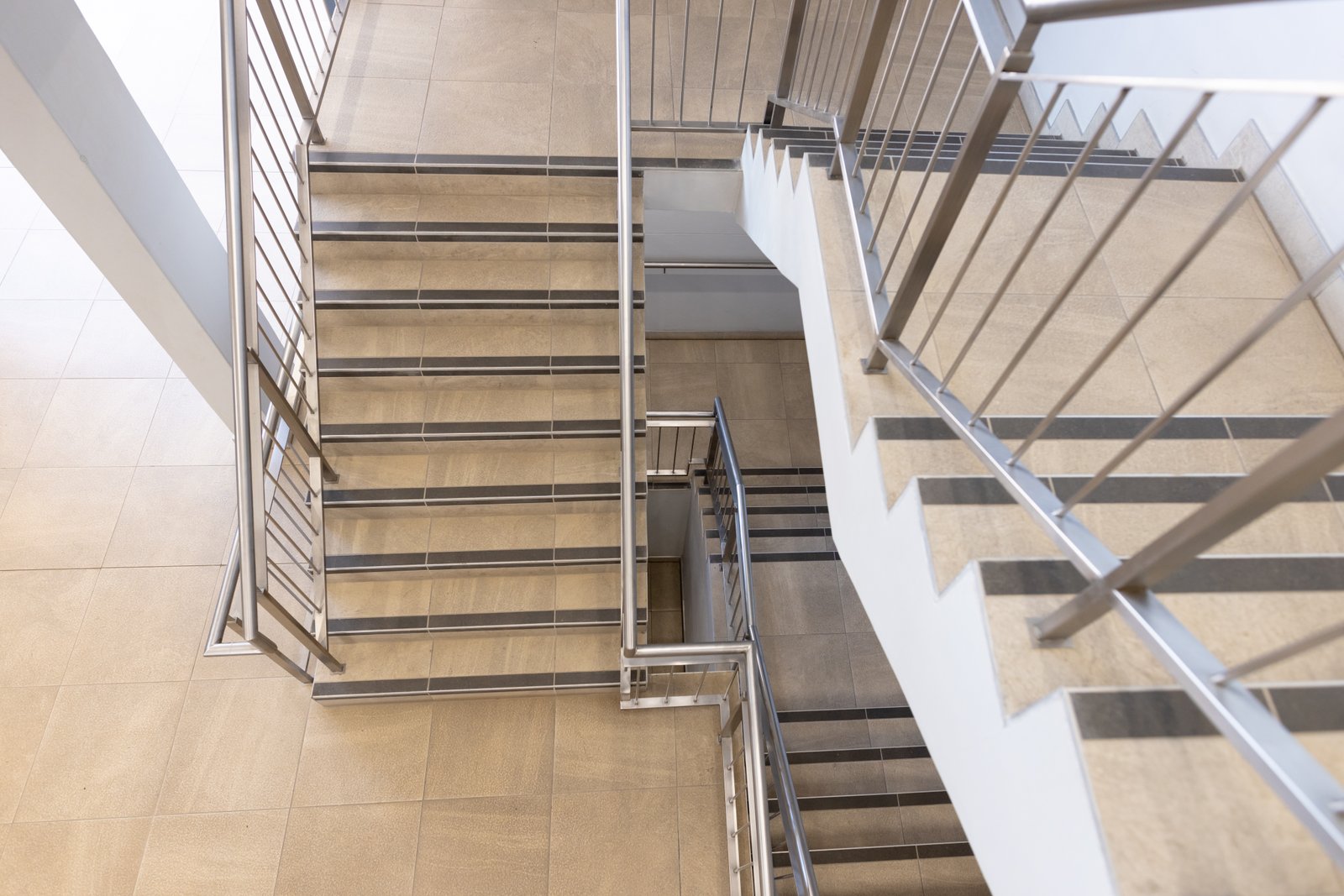
The Rise of Prefabrication and Modular Assembly
To meet the aggressive timelines, construction managers in Qatar leaned heavily on prefabrication and modular construction. This involves manufacturing large sections of the final structure—such as roof trusses, façade panels, or even entire structural bays—in an off-site factory setting. These completed modules are then transported to the construction site and simply lifted into place, drastically reducing on-site labor and assembly time.
This approach offers numerous advantages: it moves work into a controlled factory environment where quality control is higher, it improves worker safety, and it allows for parallel workstreams where the foundation is being laid on-site while the superstructure is being built in a factory. A McKinsey report on modular construction12 suggests it can speed up project timelines by as much as 20-50%. For Qatar, this acceleration was a game-changing optimization. The success of this strategy, however, is entirely dependent on the precision of the manufactured components.
The most famous example of this was the iconic Stadium 974, which was built from 974 recycled shipping containers and a modular steel frame. The entire steel skeleton was designed to be easily assembled and, crucially, disassembled. A producer using our large diameter tube mills could manufacture the primary columns and beams to the exact lengths and connection specifications required for this "Lego-like" assembly. The high material utilization of our machines (up to 98%) also minimized steel waste, directly contributing to the project's sustainability goals and optimizing material costs.
Integrating Digital Twins (BIM) with Manufacturing
The optimization of the construction process was powered by a digital revolution, specifically the widespread adoption of Building Information Modeling (BIM). BIM is a process involving the generation and management of digital representations of the physical and functional characteristics of places. The resulting BIM model is a data-rich digital twin of the stadium, containing the exact specifications for every single component, down to the last nut and bolt.
The true optimization came from creating a seamless link between this digital model and the physical manufacturing process. The data for every unique steel tube—its diameter, wall thickness, length, and material grade—can be exported directly from the BIM software and fed into the automated PLC controls of the tube mill. This direct digital thread eliminates the risk of manual data entry errors and ensures that the physical component manufactured in the factory is a perfect one-to-one match of its digital counterpart in the design model.
We have an EPC contractor client who was a pioneer in adopting this fully integrated workflow. For the Al Janoub stadium's complex, flowing roof structure, their engineers finalized the intricate design in BIM. The cutting and bending schedules for the thousands of unique tubes were then digitally exported and sent to their fabrication partner. This partner, using our machinery with its advanced PLC system, was able to program the production runs directly from the design files. This ensured every curved component was manufactured to the precise radius and length required, a level of accuracy that would be impossible to achieve at scale with manual methods.
Optimizing the Supply Chain with Just-in-Time Delivery
A final, crucial optimization was managing the immense logistical challenge of getting thousands of tons of material to multiple construction sites across a small country. Storing huge quantities of materials on-site is inefficient, creates congestion, and increases the risk of damage or loss. The solution was a Just-in-Time (JIT) delivery strategy13, which relies on a highly responsive and reliable supply chain.
In a JIT model, suppliers produce and deliver components to the construction site exactly when they are needed for installation, not weeks or months in advance. This minimizes on-site inventory, reduces storage costs, and streamlines the construction process. However, JIT is a high-stakes game; it only works if the manufacturing partners can produce quality components quickly and predictably. Any delay or quality issue at the factory can bring a multi-billion dollar project to a grinding halt.
A large building materials wholesaler in the Middle East, one of our key accounts, played a critical role as a JIT supplier for several stadium projects. They operated a battery of our heavy-duty and precision mills, giving them the flexibility to service multiple contracts simultaneously. Thanks to the high output speeds and quick-change tooling on our machines, they could adjust their production schedule on a daily basis in response to JIT calls from the various construction sites. This manufacturing agility prevented material shortages and ensured the flow of tubes to the front line was continuous and perfectly synchronized with the pace of construction.
How did the use of tube manufacturing machinery contribute to the timely completion of Qatar’s stadiums?
With the world watching, falling behind schedule on a project like the Qatar World Cup was not an option. Any delay in the critical path, especially in fabricating the steel structures, would have a domino effect. High-speed, automated tube manufacturing machinery was a key enabler, ensuring a continuous supply of components.
Tube manufacturing machinery contributed to timely completion by enabling rapid, high-volume production of standardized and prefabricated components. Its automation and efficiency reduced manufacturing lead times, facilitated just-in-time delivery, and minimized on-site rework, directly accelerating the construction schedule and ensuring deadlines were met role of prefabrication in stadium construction].
Time was the most critical, non-renewable resource for the Qatar 2022 projects. Every single aspect of the construction process was scrutinized for its impact on the master schedule. The timely completion of these monumental stadiums was a testament to meticulous planning and flawless execution, where manufacturing played a starring role. The ability to churn out thousands of meters of perfect tubing per day, every day, was fundamental. Think of it as the project's pulse. A steady, strong pulse meant the project was healthy and on schedule. Any arrhythmia in the supply chain, however small, could signal a major problem. The contribution of tube manufacturing machinery, therefore, wasn't just about making parts; it was about providing certainty. It gave project managers the confidence that the foundational components of their structures would be available when and where they needed them, without quality issues that could cause unforeseen delays supply chain management challenges in large construction projects14. I recall a client who landed a major contract for stadium seating substructures. Their success depended entirely on their ability to produce a huge volume of small, identical tubes quickly. By investing in a fully automated production line, they met their targets and even finished ahead of schedule, a rare feat in this industry.
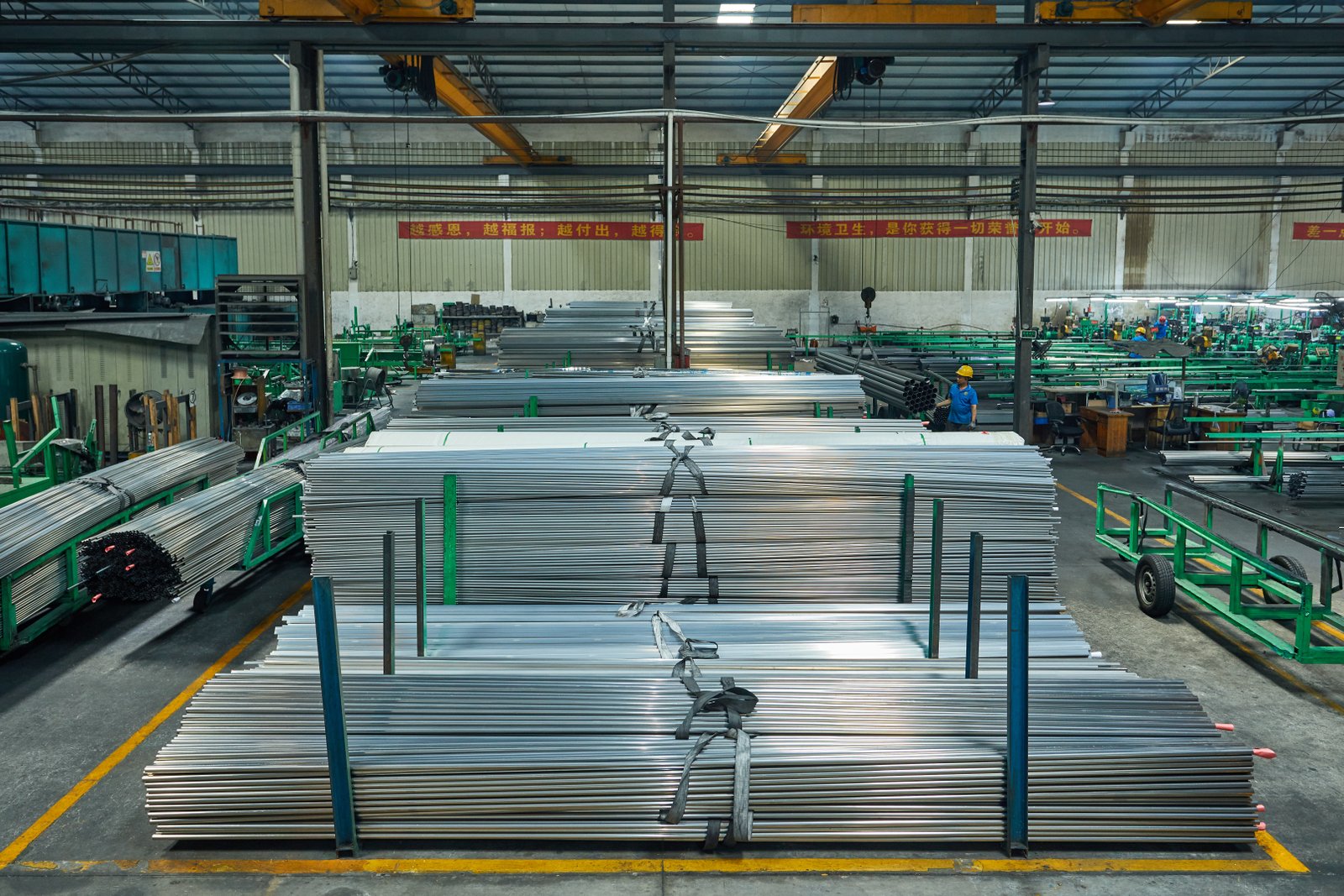
Acceleration through High-Speed Production
The most direct contribution to timely completion was sheer speed. The stadiums required millions of meters of tubing, and producing this volume required manufacturing lines that could operate at exceptionally high speeds without sacrificing quality. Traditional, slower manufacturing methods would have created an insurmountable bottleneck from the very start of the project.
Modern tube mills are engineered for high throughput. Our HF carbon steel pipe welding lines, for instance, are capable of operating at speeds exceeding 100 meters per minute for common specifications HF carbon steel pipe welding technology15. This ability to rapidly convert steel coil into finished, high-quality tubes is essential to feed the voracious appetite of multiple, concurrent mega-projects. When a single roof truss can contain hundreds of individual tubes, the ability to produce those tubes in days rather than weeks is a significant time-saver that compounds across the entire project.
Our own service data from this period provides a clear picture. We saw that clients in the region who were supplying these projects were running their XZS machines in double or triple shifts, pushing for over 90% operational uptime. A key client in India, who was supplying thousands of tons of pipes for the HVAC systems in Lusail Stadium, reported that the high speed of their new line allowed them to reduce their projected production time by 25%. This was a crucial saving that helped them accommodate a tightened delivery schedule from the main contractor without incurring penalties.
Reducing On-Site Labor and Time with Precision Parts
A hidden factor that drains time on any construction project is rework. Time spent on-site cutting, grinding, or forcing ill-fitting components together is wasted time that can cause significant delays. The principle of "measure twice, cut once" is incredibly difficult to apply on a massive, bustling construction site. The solution is to ensure parts are manufactured so precisely that they require no on-site modification.
This is where the precision of the tube mill has a direct impact on the construction schedule. When tubes arrive on-site manufactured to a consistent tolerance of ≤ ±0.05 mm, they fit together perfectly, the first time. The assembly process becomes a predictable, repeatable operation, more akin to assembling a high-tech kit than traditional, messy construction. This drastically reduces the labor hours required for assembly and, more importantly, makes the time required for each task highly predictable, which is a gift for project planners.
I have a great story from a client who is traditionally a furniture fabricator but who pivoted to produce architectural components during the construction boom. They produced thousands of decorative and functional tubes for balustrades and internal partitions. Their feedback was that the consistency of the tubes from our precision mill saved their on-site installation teams an estimated 15% in installation time. This was purely because there were zero rejections and no time was wasted on adjustments. When you scale that 15% saving across the thousands of components in an entire stadium, it translates into weeks, if not months, of saved time on the project's critical path.
The Compounding Effect of Automation and Reliability
Finally, the timely completion was supported by the unwavering reliability and automation of the manufacturing lines. In a Just-in-Time supply chain, an unexpected machine breakdown at a key supplier can be catastrophic. The entire construction site could be left waiting for parts, costing millions in lost time. Therefore, the robustness and reliability of the production machinery were paramount importance of machine uptime in manufacturing16.
Modern manufacturing solutions are designed for continuous, high-stress operation with minimal human intervention. Features like our fully automated PLC + touch-screen control systems ensure that the machine can run consistently for long periods, producing the same high-quality product on the last meter as it did on the first. The robust, CNC-machined frames of our mills provide long-term stability and durability, minimizing the risk of unexpected downtime for maintenance or repairs.
We have a long-standing relationship with a major industrial equipment distributor in the Middle East who supplied several subcontractors for the stadium projects. They repeatedly emphasized that the key reason their clients preferred and specified XZS machines was their proven reliability. In a project where contractual penalties for delays ran into the millions, having a machine that you could count on to run 24/7 without issues was an invaluable asset. This background reliability is the unsung hero that directly contributed to the project's successful and timely completion.
What key lessons can be learned from Qatar's stadium construction success for future mega projects?
As cities around the world plan their own mega-projects, they face the same daunting challenges of cost, complexity, and time. Repeating old construction methods will lead to the same old problems of delays and compromises. Qatar's success provides a powerful blueprint, highlighting key lessons that can be applied globally.
Key lessons include the critical importance of early investment in a digitized and integrated supply chain, the strategic value of prefabrication enabled by precision manufacturing, and the necessity of using advanced, reliable machinery to ensure both quality control and adherence to ambitious timelines.
The legacy of the Qatar 2022 World Cup extends far beyond the football pitch. It stands as a monumental case study in modern construction, offering a wealth of knowledge for any nation or organization embarking on a similar path. The success was not accidental; it was engineered. It was the result of a deliberate strategy that embraced technology, rethought traditional processes, and placed a premium on supply chain resilience. For us in the manufacturing industry, it was a validation of what we've been advocating for years: that the quality and capability of your production machinery are not just operational details—they are strategic assets that can determine the success or failure of a project. The lessons learned are not confined to stadiums; they are universally applicable to any large-scale infrastructure project17, from high-speed rail networks to new smart cities. As I reflect on our own involvement through our clients, the overarching takeaway is the profound impact of integrating design, manufacturing, and construction into a single, cohesive ecosystem. This integration is the blueprint for the future.
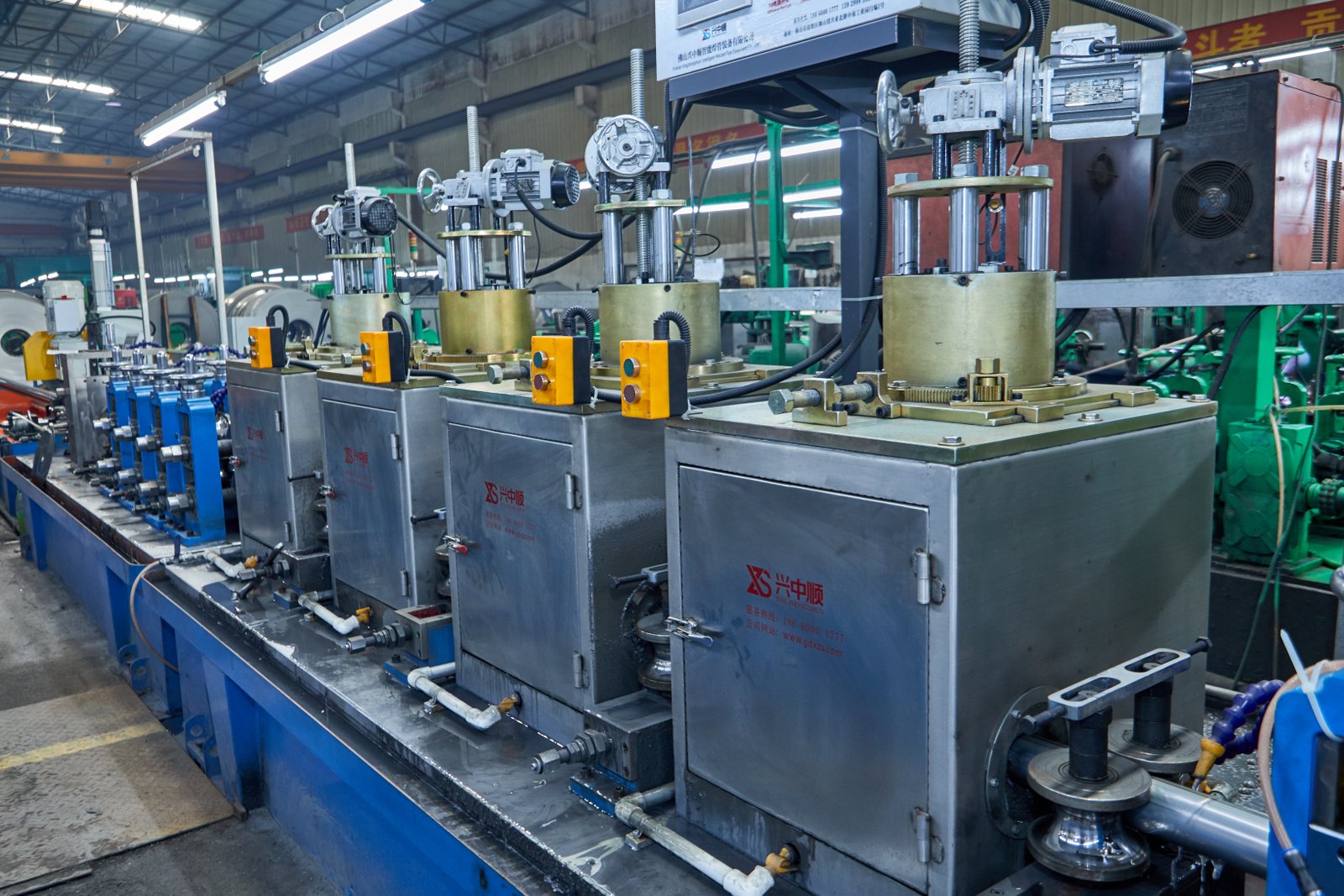
Lesson 1: Early Integration of the Supply Chain is Non-Negotiable
The first and most crucial lesson is to abandon the traditional, sequential model of design-bid-build. This old approach, where the design is completed in isolation before being sent out to contractors and suppliers, is too linear and fraught with risk. It often leads to designs that are difficult or unnecessarily expensive to build, causing delays and costly rework when theory collides with reality.
Qatar's success demonstrated the power of the Early Contractor Involvement (ECI) model18, where key manufacturers and fabricators are brought into the conversation during the design phase. This collaborative approach allows for a more pragmatic and buildable design from the outset. Manufacturers can provide immediate feedback on material choices, profile feasibility, and production constraints. This de-risks the entire project by ensuring the design is grounded in manufacturing reality, preventing major issues from emerging down the line.
From our vantage point at XZS, we saw this in action. Our most successful clients on these projects were those who were in consultation with the EPC contractors months or even years in advance. They discussed the specific tube profiles, material grades, and tolerances required, which gave them ample time to prepare their production lines, order the correct tooling, and plan their capacity. This proactive, integrated approach is a fundamental lesson for any future mega-project: treat your manufacturers as partners, not just vendors.
Lesson 2: Technology is the Ultimate Enabler of Quality and Speed
The second key lesson is that you simply cannot achieve 21st-century architectural visions with 20th-century technology. The geometric complexity and tight tolerances of modern designs demand a corresponding level of sophistication in the manufacturing equipment. Attempting to meet these demands with outdated machinery is a recipe for quality issues, delays, and budget overruns.
A strategic investment in advanced machinery should be seen as a critical project investment, not just a capital expenditure for the supplier. Intelligent tube mills equipped with high-precision controls, full automation, and quick-change capabilities are not a cost center; they are an investment in project certainty. The ability to reliably produce high-quality components at speed is the bedrock upon which all other optimization strategies, from prefabrication to Just-in-Time delivery, are built.
A crucial financial lesson for future project developers is to look beyond the initial purchase price and consider the 'Total Cost of Ownership19' and 'Total Project Impact' of the manufacturing technology in their supply chain. A reliable, high-output machine from a reputable manufacturer like XZS might have a higher initial cost, but the ROI is immense. The savings from reduced material waste (with our lines achieving up to 98% utilization), lower labor requirements due to automation, and the elimination of delays caused by defects or breakdowns offer a far greater return, safeguarding the entire project's financial health.
Lesson 3: Sustainability and Legacy Must Be Designed-In from the Start
Finally, mega-projects today face unprecedented public scrutiny over their environmental impact and long-term legacy. It's no longer acceptable to build massive structures that are used for a few weeks and then left to decay. The lessons from Qatar emphasize that sustainability and post-event use20 must be integral to the design from day one.
Manufacturing plays a key role in this. The demountable Stadium 974 is the prime example, a concept only possible through precision-manufactured components designed for disassembly and reuse. Furthermore, sustainable manufacturing practices contribute directly to a project's green credentials. Our energy-saving high-frequency welding technology, for example, consumes significantly less power than older systems, reducing the overall carbon footprint of the thousands of tons of tubes produced. Maximizing material utilization, as our machines do, means less raw material is consumed and less scrap is generated.
The most forward-thinking lesson is to embrace a circular economy mindset in construction21. The high-quality, corrosion-resistant steel tubes used in these stadiums are not disposable commodities; they are valuable assets. Because they were manufactured to such high standards, they have a long and durable useful life. They can be reclaimed, repurposed, or recycled effectively at the end of the structure's life. Choosing high-quality manufacturing from the start is a lesson in future-proofing, ensuring that the materials procured for the project retain their value and can contribute positively to the economy and environment for decades to come.
Conclusion
The triumphant construction of Qatar's stadiums was a landmark achievement. It proved that success in modern mega-projects hinges on the strategic alliance of ambitious design and advanced, precision-driven manufacturing machinery. This synergy is the definitive blueprint for building the future, on time and to perfection.
-
Learn about logistical and engineering hurdles in stadium megaproject construction. ↩
-
Discover the technology behind precision tube production for large-scale projects. ↩
-
Understand the environmental factors influencing material selection for coastal projects. ↩
-
Find verified statistics about material costs and investment amounts for Qatar stadiums. ↩
-
Explore technical demands and system complexities of stadium HVAC installations. ↩
-
Get a breakdown of MEP (Mechanical, Electrical, Plumbing) roles in modern stadium projects. ↩
-
Learn why tube consistency is crucial for reliable, fast construction and project timelines. ↩
-
Explore which specialized steels are most resistant to Qatar’s harsh climate for stadiums. ↩
-
Find out the role ISO 9001 plays in ensuring quality and safety for major construction projects. ↩
-
Learn how modular construction accelerates timelines and improves quality for mega construction projects ↩
-
Discover how BIM creates a digital twin and links design to manufacturing for accuracy ↩
-
See real-world data on how modular construction accelerates projects and saves costs ↩
-
Understand the principles of JIT delivery and its benefits to construction logistics ↩
-
See typical supply risks and solutions in complex construction supply chains for stadiums. ↩
-
Discover how HF welding boosts production speed and quality in tube manufacturing lines. ↩
-
Find out how machine reliability impacts production timelines and project success. ↩
-
Discover best practices and lessons from mega infrastructure developments worldwide ↩
-
Understand how ECI improves collaboration and reduces design-construction conflicts ↩
-
Learn to calculate TCO for better long-term investment in production machines ↩
-
Explore sustainability strategies for large event venues and their real-world impacts ↩
-
Find out how circular principles are shaping the future of sustainable construction ↩
